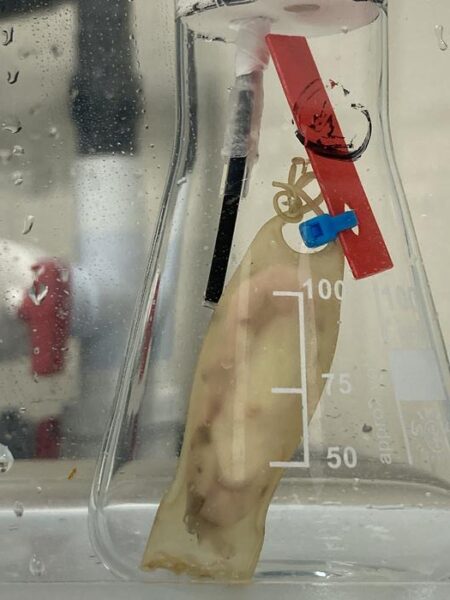New research suggests that electromagnetic fields from offshore wind farm cables may not harm shark development as previously feared. This finding could have significant implications for the future of marine renewable energy and shark conservation efforts.
Offshore wind farms are becoming increasingly important in the global shift towards renewable energy. As more of these structures appear in our oceans, questions arise about their impact on marine life. Researchers are now working closely with energy companies to understand how these technologies affect sea creatures.
Sharks and Electromagnetic Fields: A Complex Relationship
“Wind farms can induce noise, vibrations, interruptions to ecological continuity and generate electromagnetic fields at the level of submarine electric cable,” says Dr Julie Lucas, a research associate at France’s National Museum of Natural History. “They can affect behaviour of electro-sensitive species which use natural electromagnetic fields to move and feed, such as sharks.”
Wind farms use underwater cables that carry either alternating current (AC) or direct current (DC). These cables create strong magnetic fields in the surrounding water. “Currently, wind farms located less than 50km from the coast use AC current, whereas more powerful future wind farms are planned to be located more than 50 km away and will use DC current,” says Dr Lucas.
These magnetic fields could potentially disrupt the behavior of sharks and other electro-sensitive species. Such animals rely on natural electromagnetic fields for navigation and hunting. As more wind farms are built, their impact on marine life could increase.
Studying Shark Development Near Wind Farm Cables
Dr Lucas and her team are investigating how these magnetic fields affect shark survival, development, and behavior. They’re focusing on small-spotted catsharks at two crucial life stages: embryo and juvenile.
The researchers exposed these sharks to conditions mimicking those near wind farm cables, using both AC and DC currents. They tracked daily survival rates, weekly growth, and metabolic rates for both life stages.
“Thankfully, preliminary results suggest that the impact of alternating electromagnetic fields seem to be limited on the factors that we have measured,” says Dr Lucas. However, she notes that they’re still analyzing the full results and plan to study DC current effects later this year.
This research could have far-reaching implications. “The results of this project will make it possible to understand more precisely how sharks react to electromagnetic fields depending on their intensity and the type of current,” says Dr Lucas. “They will also improve our knowledge of the impacts of MREs on marine species.”
Dr Lucas hopes her work will inform policies that protect marine life while allowing for renewable energy development. She believes it could lead to improvements in cable design that further reduce environmental impact. “This project will provide essential information for managers and decision-makers to meet the challenges of developing MREs without harming marine biodiversity,” says Dr Lucas.
The findings will be presented at the Society for Experimental Biology Annual Conference in Prague, July 2-5, 2024. As the world continues to grapple with climate change and the need for clean energy, studies like this one play a crucial role in balancing environmental protection with renewable energy goals.
If our reporting has informed or inspired you, please consider making a donation. Every contribution, no matter the size, empowers us to continue delivering accurate, engaging, and trustworthy science and medical news. Independent journalism requires time, effort, and resources—your support ensures we can keep uncovering the stories that matter most to you.
Join us in making knowledge accessible and impactful. Thank you for standing with us!

